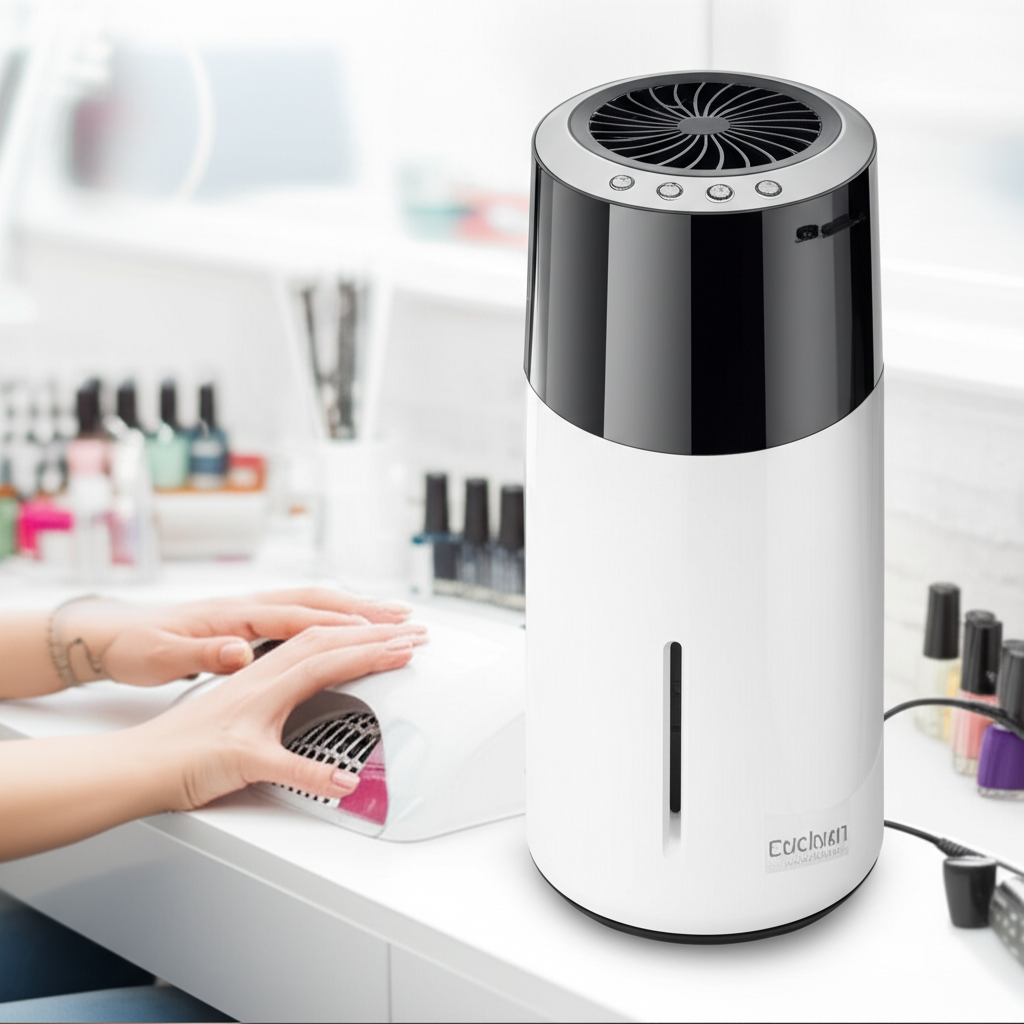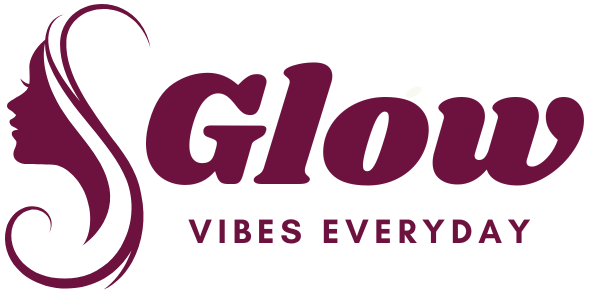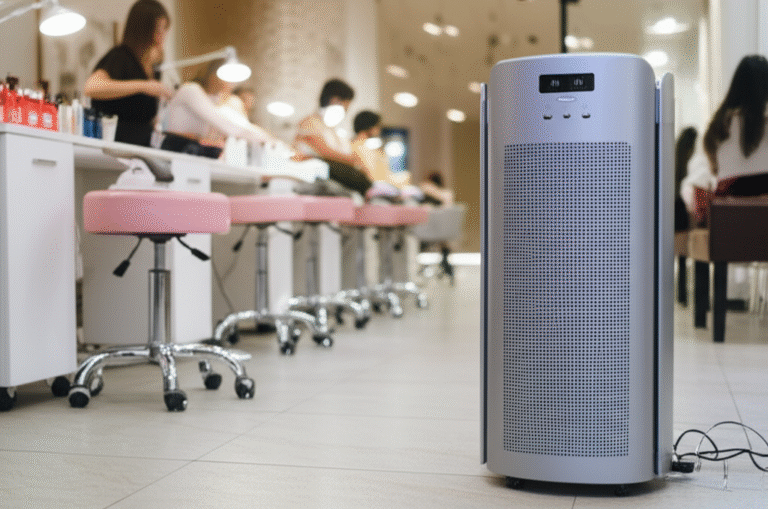Are Air Purifiers Good for Nail Salons? A Comprehensive Guide

Are air purifiers good for nail salons? This question is becoming increasingly prevalent as salon owners and technicians prioritize the health and well-being of both their staff and their clientele. The nail industry, while offering a fantastic service and creative outlet, inherently involves the use of chemicals and the creation of airborne particles that can impact indoor air quality. From the fine dust generated during filing and shaping to the volatile organic compounds (VOCs) released from polishes, primers, and removers, the air within a salon can become a cocktail of potentially harmful substances. Understanding the benefits and practical considerations of incorporating air purification systems is crucial for creating a safer, healthier, and more pleasant environment.
The pursuit of beautiful nails is a popular and thriving industry, but it’s essential to acknowledge the potential downsides associated with the materials and processes involved. Nail technicians are exposed to a variety of chemicals daily, including acetone, formaldehyde, toluene, and methacrylic acid, among others. These substances can be inhaled, absorbed through the skin, and can cause a range of health issues, from minor irritations like headaches and nausea to more serious long-term concerns such as respiratory problems and allergic reactions. Furthermore, the fine dust particles produced during nail filing can carry residual chemicals and can irritate the lungs.
For clients, while their exposure is typically shorter-term, the cumulative effect of breathing in these airborne contaminants during a manicure or pedicure can still be a concern. Many clients also have underlying health conditions or sensitivities that can be exacerbated by poor indoor air quality. This is where the role of air purifiers becomes not just beneficial, but potentially essential. By actively removing these airborne pollutants, air purifiers can significantly improve the overall air quality within a nail salon, creating a more inviting and health-conscious space for everyone.
The Science Behind Salon Air Quality and the Role of Air Purifiers
To fully grasp are air purifiers good for nail salons?, it’s important to delve into the specific pollutants found in these environments and how air purifiers work to combat them. The primary culprits can be categorized into two main groups: chemical vapors and particulate matter.
Chemical Vapors (VOCs): Volatile Organic Compounds are carbon-containing chemicals that easily evaporate at room temperature. In nail salons, they originate from a wide array of products:
Nail Polishes and Topcoats: Contain solvents like ethyl acetate and butyl acetate, as well as plasticizers and colorants.
Nail Polish Removers: Primarily acetone or ethyl acetate, known for their strong fumes.
Acrylics and Gels: These systems often involve monomers and polymers, which release strong chemical odors during application and curing. Methacrylic acid is a common component that can be particularly irritating.
Primers and Hardeners: These products often contain formaldehyde or toluene, which are known irritants and can have more serious health implications with prolonged exposure.
Adhesives and Glues: Used for nail tips or embellishments, these can also release VOCs.
Sanitizers and Disinfectants: While crucial for hygiene, some cleaning agents can also contribute to airborne chemical levels.
These VOCs are invisible and odorless or have a strong, lingering scent. When inhaled, they can irritate the respiratory tract, eyes, and skin. Some VOCs are also classified as carcinogens or endocrine disruptors, raising concerns about long-term occupational health for technicians.
Particulate Matter (PM): This refers to tiny solid particles or liquid droplets suspended in the air. In nail salons, the most significant source of particulate matter is:
Nail Dust: The process of filing natural nails, artificial nails (acrylics, gels, dip powder), and even buffing can generate incredibly fine dust. This dust is not just keratin; it can also contain residual chemicals from the products used. These particles can be as small as 2.5 micrometers (PM2.5) or even smaller, allowing them to penetrate deep into the lungs.
Dander and Hair: While not chemical in nature, these can also be present and contribute to general air quality issues.
How Air Purifiers Address These Pollutants:
Air purifiers employ various filtration technologies to capture and neutralize airborne contaminants. For nail salons, a multi-stage filtration system is generally most effective:
Pre-filters: These capture larger particles like hair, lint, and visible dust. This is crucial in a salon setting to prevent larger debris from clogging more sensitive filters.
Activated Carbon Filters: This is a vital component for nail salons. Activated carbon is highly porous and has a massive surface area, allowing it to adsorb (trap) VOCs and chemical odors effectively. It acts like a sponge for gaseous pollutants.
HEPA Filters (High-Efficiency Particulate Air): These filters are designed to capture at least 99.97% of airborne particles 0.3 micrometers in size. This makes them incredibly effective at trapping fine nail dust, dander, and other microscopic allergens.
Optional Add-ons: Some advanced purifiers may include UV-C light (to kill bacteria and viruses) or ionizers (which charge particles, causing them to clump and fall or stick to surfaces, though some ionizers can produce ozone, which should be avoided).
By combining these filtration methods, air purifiers can significantly reduce the concentration of both chemical fumes and particulate matter in the salon air, directly addressing the core air quality concerns.
The Multifaceted Benefits of Air Purifiers in Nail Salons
The question are air purifiers good for nail salons? yields a resounding “yes” when considering the numerous advantages they offer. These benefits extend beyond just air cleanliness, impacting the health of technicians, the comfort of clients, and even the overall reputation of the salon.
1. Improved Occupational Health for Technicians:
This is arguably the most significant benefit. Nail technicians spend many hours each day in close proximity to the very products that release harmful chemicals and dust. Consistent exposure can lead to:
Respiratory Issues: Chronic coughing, wheezing, shortness of breath, and potentially more serious conditions like occupational asthma or bronchitis.
Skin and Eye Irritation: Redness, dryness, itching, and burning sensations.
Headaches and Nausea: Common symptoms of VOC exposure.
Allergic Reactions: Sensitivities to specific chemicals can develop over time, leading to more severe reactions.
By removing these irritants from the air, air purifiers create a healthier working environment, reducing the risk of developing these occupational health problems and improving the quality of life for technicians.
2. Enhanced Client Experience and Comfort:
Clients visit nail salons for relaxation, pampering, and a boost of confidence. A salon filled with strong chemical fumes or dusty air is hardly conducive to this experience.
Reduced Odor: Air purifiers, particularly those with robust activated carbon filters, can significantly reduce the strong, often unpleasant, chemical odors associated with nail products. This creates a more pleasant and less overwhelming environment for clients.
Minimized Irritation: Clients who are sensitive to chemicals or prone to allergies will appreciate a salon that actively works to improve air quality. It can prevent them from experiencing headaches, watery eyes, or respiratory discomfort during their service.
Perception of Professionalism and Care: A salon that invests in air purification signals a commitment to health, safety, and customer well-being. This can be a significant differentiator and enhance the salon’s reputation.
3. Reduced Spread of Airborne Contaminants:
Beyond chemical fumes and dust, salons can also be environments where airborne bacteria and viruses are present, especially in high-traffic areas. While not their primary function, HEPA filters can capture some of these microorganisms, contributing to a more hygienic environment. This is especially relevant in the post-pandemic world where clients are more aware of germ transmission.
4. Protection Against Fine Dust Inhalation:
The fine dust generated during filing is a major concern. This dust can remain suspended in the air for extended periods and, when inhaled, can bypass the body’s natural defenses. HEPA filters are exceptionally effective at capturing this microscopic debris before it can be breathed in by technicians or clients.
5. Compliance and Risk Mitigation:
While specific regulations vary by region, there is a growing awareness of the need for better ventilation and air quality control in occupational settings. Investing in air purifiers can be a proactive step towards ensuring compliance with potential future health and safety standards and mitigating liability.
Choosing the Right Air Purifier for Your Nail Salon
Now that we’ve established are air purifiers good for nail salons? with a clear “yes,” the next crucial step is selecting the most appropriate unit. Not all air purifiers are created equal, and a one-size-fits-all approach won’t be effective.
Key Factors to Consider:
Coverage Area (CADR): Air purifiers are rated for the size of the room they can effectively clean. This is often indicated by a Clean Air Delivery Rate (CADR) for smoke, dust, and pollen. You’ll need to calculate the square footage of your salon and choose a unit that is rated for at least that size, ideally slightly larger for more robust performance. Consider the layout of your salon; if it’s an open-plan space, a single large unit might suffice, but if you have distinct treatment areas, multiple smaller units might be more effective.
Filtration System: As discussed earlier, a multi-stage system is essential. Prioritize units with:
A robust pre-filter: For larger particles.
A substantial activated carbon filter: This is non-negotiable for capturing chemical fumes and odors. Look for units with a significant amount of carbon.
A true HEPA filter: To capture fine dust and other microscopic particles.
Noise Level: Salons are places where conversations and relaxation are important. Look for units with low decibel ratings, especially if you plan to run them continuously. Many units have a “sleep” or “quiet” mode.
Maintenance and Filter Replacement: Filters need to be replaced periodically to maintain effectiveness. Check the cost and availability of replacement filters for the models you are considering. Activated carbon filters typically need replacement more frequently than HEPA filters, often every 6-12 months depending on usage and air quality.
Energy Efficiency: Consider the power consumption of the unit, especially if it will be running for extended periods. Look for ENERGY STAR certified models.
Ozone Production: Crucially, avoid air purifiers that produce ozone. While ozone can neutralize odors and kill some airborne contaminants, it is a lung irritant and can exacerbate respiratory problems. Ionizers, in particular, can sometimes produce ozone as a byproduct. If a unit has an ionizer, ensure it has an option to turn it off or that it meets strict ozone emission standards.
Portability and Placement: Consider the size and weight of the unit if you anticipate needing to move it. Think about where it will be placed to maximize air circulation without being a tripping hazard or obstructing workflows.
Specific Recommendations for Nail Salons:
Focus on Odor and VOC Removal: Given the primary concerns in a nail salon, units with exceptionally large and effective activated carbon filters should be a top priority.
Targeted Placement: Consider placing units near the areas where the most dust and fumes are generated, such as near the nail technician’s station or in the main waiting area.
Consider a Dedicated Desk Unit: For individual technicians who want to ensure their immediate workspace is clean, a smaller, personal air purifier can be a good addition.
Implementing and Maintaining Air Purifiers in Your Salon
Once you’ve selected the right air purifiers, proper implementation and ongoing maintenance are key to realizing their full benefits.
Implementation Strategies:
Strategic Placement:
Near High-Activity Areas: Position units where filing, polishing, and chemical application are most concentrated. This could be directly at the technician’s station or in the central area of the salon.
Maximize Airflow: Ensure the units are not placed in corners or blocked by furniture, allowing for optimal air circulation.
Consider Multiple Units: For larger salons or those with distinct zones, using multiple units strategically can provide more comprehensive air cleaning.
Educate Your Staff: Inform your nail technicians about the purpose and benefits of the air purifiers. Explain how they work and the importance of proper filter maintenance. Encourage them to report any issues or unusual sounds from the units.
Communicate with Clients: A small sign or mention on your website or social media about your commitment to air quality can be a great marketing tool. It shows clients you care about their well-being.
Consider Ventilation: Air purifiers are a fantastic addition, but they are not a substitute for good ventilation. Ensure your salon has adequate fresh air exchange. If possible, open windows when weather permits or ensure your HVAC system is functioning efficiently and regularly maintained.
Maintenance Schedule:
Regular Filter Checks: Most manufacturers provide guidelines for filter replacement. Typically, pre-filters may need cleaning or replacement every 1-3 months, while HEPA and activated carbon filters may last 6-12 months. However, in a high-use environment like a nail salon, you may need to replace them more frequently.
Visual Inspection: Periodically check the filters for visible dust buildup. If the pre-filter is heavily soiled, it’s time for cleaning or replacement, which will prolong the life of the more expensive HEPA and carbon filters.
Cleaning the Unit: Dust can accumulate on the exterior and interior of the air purifier. Wipe down the unit regularly with a damp cloth. Ensure the unit is unplugged before cleaning.
Record Keeping: Keep a log of when filters were last replaced. This helps ensure you stay on schedule and don’t inadvertently use depleted filters.
By adhering to a consistent maintenance schedule, you ensure that your air purifiers continue to operate at peak efficiency, providing the best possible air quality for your salon.
Addressing Potential Concerns and Misconceptions
While the benefits are clear, it’s important to address any potential concerns or misconceptions regarding air purifiers in nail salons.
“They are too expensive.” While there is an initial investment, consider the long-term costs of poor air quality: employee health issues, potential sick days, and client dissatisfaction. The cost of air purifiers can be offset by improved staff retention, reduced health-related absences, and the positive impact on customer perception. Many effective units are available at reasonable price points, and you can often find models designed for commercial use that are more robust.
“They are too noisy.” As mentioned, modern air purifiers are designed with noise levels in mind. Look for models with low decibel ratings and utilize quiet modes. Strategically placing units can also help mitigate noise.
“They don’t really make a difference.” The scientific evidence supporting the effectiveness of HEPA and activated carbon filtration in removing particulate matter and VOCs is substantial. In a high-exposure environment like a nail salon, the impact can be particularly noticeable.
“They produce ozone.” This is a valid concern, and it highlights the importance of choosing the right type of air purifier. Always opt for ozone-free models. If a unit has an ionizer, verify its ozone output or ensure the ionizer can be turned off.
“They are a replacement for good ventilation.” This is a crucial misconception to dispel. Air purifiers supplement ventilation; they do not replace it. Fresh air exchange is vital for overall air quality and removing moisture and other contaminants that purifiers may not capture.
Conclusion: A Breath of Fresh Air for Your Nail Salon
So, are air purifiers good for nail salons? The answer is an unequivocal and resounding yes. They are an essential tool for any salon owner committed to creating a healthy, safe, and pleasant environment for both their staff and their clients. By effectively tackling the unique air quality challenges presented by nail care products and processes, air purifiers contribute significantly to:
Protecting the long-term health of nail technicians.
Enhancing the comfort and satisfaction of clients.
Improving the overall professionalism and appeal of the salon.
Mitigating potential health risks and creating a more responsible business operation.
Investing in the right air purification system is not just an expenditure; it’s an investment in the well-being of everyone who walks through your salon doors. It’s a proactive step towards a healthier, cleaner, and more inviting space, ensuring that the pursuit of beautiful nails doesn’t come at the cost of compromised air quality. Make the smart choice for your salon, your staff, and your clients – breathe easier with the implementation of effective air purification.

